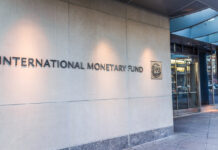This article has addressed two environmental problems whose origins lie in the transport sector: local air pollution and CO2 emissions. Globally, the contribution of these impacts in Asian megacities shows an increasing trend, and therefore calls for serious mitigation efforts mainly regulation measures and ways to improve emission intensity. There are good prospects for policy measures to deliver CO2 reduction in Asian developing countries as co-benefits rather than as primary benefits and that are politically acceptable, such as mass rapid transit and compact city design, among others.
Developing Asian Megacities
Asian megacities are known not only for their rapid economic growth but also for their rapid and large-sale urbanization. Due to their high concentration of population, economic activity, and motorization, megacities are primary contributors to both local and global environmental problems. The environmental problems in megacities are closely linked to the quality of life, which has direct implications for their competitiveness. The transport system in a megacity directly influences its ability to compete, and contributes to local and global environmental problems. Measures that govern urban transport should therefore be the cornerstone of the long-term development strategies for Asian megacities.
In developing Asians megacities, used vehicles are popular for use as both private cars and buses, and these vehicles are sometimes imported from developed countries. These old used vehicles emit more pollutants than new ones. Motorcycles are also popular in a number of Asian megacities, such as Bangkok, Hanoi, Ho Chi Minh City, Jakarta and Taipei. This mode of transport, however, has a higher emission load factor per person than the use of four-wheeled vehicles. Furthermore, worsening traffic congestion exacerbates these problems, and imposes direct economic and health costs on both drivers and non-drivers in the form of wasted money, stress, and other illnesses.
The rapid acceleration of motorization is at the root of increasing local air pollution and the increasing trend of carbon dioxide (CO2) emissions. Therefore, a more effective approach might be for developing megacities to tackle these issues almost simultaneously by controlling the growth of motorization. Most Asian megacities have established the necessary regulations and organizational procedures to reduce local air pollution. Moreover, to varying extents, there has been direct investment to promote the use of clean fuel in buses, taxis, and para-transit vehicles.
Mitigating measures of local air pollution
To control local air pollution, Asian countries have generally adopted a number of related standards and carried out various programs to improve the quality of fuel used in vehicles. One major tool used in air quality management is the application of ambient air quality standards, particularly the National Ambient Air Quality Standards (NAAQS), which were introduced in most Asian countries in the late 1990s and throughout the last decade. These standards are not uniform, and they vary considerably in terms of the levels and types of regulated pollutants. These standards also tend to be more lenient than the WHO guidelines, EU limits, or the US Environmental Protection Agency (USEPA) standards. The only major exception is Japan’s NAAQS, which under its basic Environment Law and Air Pollution Control Law, is to some extent more stringent than the USEPA standard.
The next air quality management tool for the transport sector is the vehicle emission standards. Asian countries are progressively moving towards higher standards. Japan, South Korea, and Taiwan are more advanced. China and most South Asian countries adopt a road map for new vehicle standards, laying out a schedule for the introduction of vehicle emission standards that are equivalent to the Euro emissions standards. In terms of vehicle inspection and maintenance (I&M) programs, the Japanese standards are notably rigorous, which leads to real improvement in the rate of compliance with regulations. South Korea, Taiwan, and Thailand have included routine spot checks both for cars and motorcycles to enforce their programs.
Controlling motorcycles and para-transit
Because of their great mobility, convenience, and affordability, motorcycles are extremely popular in both the urban and rural areas of some Asian countries. There are two types of motorcycle engines: two-stroke and four-stroke. The emissions from two-stroke engines, which run on a mixture of gasoline and lubricating oil, generate more pollution than four-stroke engines of the same size, especially PM, HC, and CO2, but lower NOx emissions.
Considering the political difficulty and the resulting scale of possible social impact, no country has completely phased out vehicles with two-stroke engines. However, in 2005, all gasoline two-wheelers were phased out in Shanghai, though a relatively small number are still in operation in the suburban areas, whereas Taiwan (since 2004) and Thailand (since 2001) have increased the proportion of motorcycles with four-stroke engines by tightening the relevant vehicle emission standards. Such an approach indirectly forces the phasing out of two-stroke motorcycles, which produce a higher level of emissions.
In the developing cities of Asia, informal transport services, or para-transit, which include minibuses, three-wheelers, and motorcycle-taxis, play an important roles in urban transport. Their drawback is that they contribute to traffic congestion, accidents, and air and noise pollution, because informal transport vehicles are often old and low on performance. Thailand has made some efforts to restrict para-transit operations. Land Traffic Department imposed a ban upon new taxi tuk-tuk registrations in 1984, limiting the number of tuk-tuks in operation to 7,400 units. In 1995, an official passenger van transit system was launched by the Bangkok Mass Transit Authority, which also sets van routes and administers law-enforcement for any violations. In 2003, Bangkok further required motorcycle taxi-drivers to register and be granted a vest to be worn as proof of authorization.
Promoting alternative fuels for public transport
Buses and taxis are the predominant public transport in the developing countries of Asia. The fact that the majority of these vehicles are old and not roadworthy has prompted countries to promote alternative fuels explicitly for use in such vehicles. Although Asian countries other than South Korea and Japan exhibit a far more modest increase in the use of LPG and natural gas in vehicles, progress has been made through a number of attempts to promote the use of these alternative fuels.
In April 1999, twelve Chinese cities, including Beijing and Shanghai, participated in the ‘National Clean Vehicle Action’ program, which introduced alternative fuels, particularly CNG and LPG. Thus, the number of CNG and LPG vehicles and fuelling stations increased rapidly in some of the cities covered under this program. Shanghai and Beijing played a major role in this trend by developing the infrastructure (e.g., fuelling stations), designing policies (e.g., stringent environmental standards in Beijing), and providing financial support (e.g., a subsidy for retrofitting taxis to use LPG, and R&D on CNG/LPG vehicle technologies adopted in Shanghai). As a result, by 2003, CNG and LPG vehicles accounted for a large proportion of the urban buses and taxis in some regions: more than 74% of the taxis in Shanghai and 85% of the buses in the Sichuan province, for example.
Other Asian countries have also begun to convert buses to LPG/CNG. Through the establishment of TransJakarta Busway, Jakarta has equipped 70% of its fleet to be CNG-powered, while the rest of its buses are Euro-II compliant. In Bangkok, LPG is the main fuel used in taxis; 73% of the taxis there are LPG-powered. In a recent move, Thailand guaranteed to freeze the price of CNG at 12 THB/kg from 2005 to 2010 for Bangkok’s urban bus fleet. The Philippines, under the Natural Gas Vehicle Program for Public Transport, has mandated the use of CNG in the 25 buses that currently ply the strategic routes of Southern Luzon to Metro Manila; this number was expected to increase to 10,000 units by 2020. In Taiwan, LPG is not only used in public transport, because the country also encourages the public to use LPG as an alternative fuel in other vehicles by providing a subsidy of 3 NTD per litre of LPG, under a program launched in 2001. A number of Asian megacities have also replaced the majority of their taxis and para-transit fleets with LPG/CNG-powered vehicles; these include in Bangkok (1,500 LPG taxis and 7,400 LPG three-wheel tuk-tuks) and Taipei (LPG taxis). Another example is Indonesia, which has begun to introduce a new Euro-II-compliant four-stroke CNG three-wheeled vehicle in cooperation with Bajaj Auto, which expects to replace about 15,000 two-stroke three-wheel vehicles.
Economic measures of low emission vehicle use
Despite their advantages over gasoline-powered scooters, electric bikes have been criticized on a number of grounds, including their lower environmental performance compared to buses and bicycles, their contribution to traffic congestion, and safety concerns. By far the largest environmental issue associated with electric bikes is lead pollution, which is not produced through tailpipe emissions, but rather from the production, recycling, and disposal of batteries, spread over the life cycle of the bike. That said, the use of electric bikes might also create advantages, to the extent that they may replace cars and conventional motorcycles. Such concerns have forced policymakers to act rapidly toward developing national and local policies regarding whether to promote or regulate electric bikes.
The Chinese government updated its excise tax rates, reducing them by 2-5% on vehicles with small-displacement engines (1,000-1,500 cc), while increasing them by 8-20% on vehicles with larger-displacement engines (more than 4,000 cc), to further encourage the manufacture of vehicles with small-displacement engines. In 2009, more intensive policies and initiatives were initiated, including the implementation of a demonstrative project involving the introduction of 1,000 electric vehicles in ten cities and the provision of financial subsidies for energy-saving vehicles and to the buyers of alternative-fuel vehicles. Similarly, on 27 July 2004, the Thai Cabinet approved a new car excise tax package, which resulted in the abolition of the off-road purpose vehicle class used for SUVs with four-wheel-drive systems. The tax rate for the off-road purpose vehicles was increased from a fixed 29% to a range of 30-50%, based on four different engine-size brackets. The implementation of this policy resulted in a 2% decrease in the number of cars with engines larger than 2500 cc. The excise tax for pickup trucks was set at 20%, for fuel-cell and hybrid vehicles at 10%, and for vehicles using natural gas at 20%. Later, in 2007, the Thai authorities also approved a range of incentives for the production of eco-cars. Eco-car manufacturers were granted a maximum eight-year exemption from corporate income tax payment and machinery import duties, and the excise rates for eco-cars were set at 17%, as compared to a rate of 30-50% for other types of cars in the country.
In Japan, the so-called green tax system was launched in April 2002, with an aim to reduce the automotive tax on Low Emission Vehicles (LEVs) and to increase the rate of replacement of old diesel vehicles. Since the system’s implementation, its effect has been so significant that the tax revenue in fiscal year 2002 fell much lower than expected, because the share of LEVs qualifying for tax relief increased to twice the estimated level. In the face of such consumer behaviour, there was fierce competition among automobile makers to develop LEVs, because they understood that manufacturers without LEV offerings would find it difficult to survive. The tax scheme consists of a reduction in the automobile tax applied to low-emission and fuel-efficient vehicles (introduced in 2001) and reductions in the acquisition tax (introduced in 1999) for purchasers of low-emission and fuel-efficient vehicles.
Avoid-Shift-Improve framework
Avoid-Shift-Improve (ASI) framework, which means 1) reducing unnecessary travel demand (AVOID), 2) shifting travel to lower-carbon modes (SHIFT), and 3) improving the intensity of transport-oriented emissions (IMPROVE), can be presented to show the low-carbon transport measures by strategy as a matrix table. Public transport is in a dominant position to meet mobility needs in Asian megacities because of high rate of urbanization and the relatively lower level of economic development; however, rapid economic growth is leading to motorization in these megacities. The share of public transport in Asian megacities is still very high in international comparisons, which may have important implication for policymakers in terms of the need for different approaches for how we should plan and design urban transport.
Need more fundamental solutions of CO2 emissions reduction
Unlike the emissions of local air pollutants, the ultimate impact of CO2 is cumulative and relatively time and place-independent. Interestingly, alth-ough there is less political willingness to directly target reductions in CO2 emissions, good efforts have been made to tackle local pollution – and for understandable reasons. As the per capita income rises and the public demands cleaner air, local pollution issues can garner enough political support to effect the needed change. This is exactly the trend observed in Asian developed countries. The case of CO2 emissions, however, is different. As long as people use some form of motorized transport that uses fossil-fuel based energy, CO2 emissions are unavoidable, despite the effectiveness of the promotion of alternative fuels and LEVs. Thus, this problem requires a more fundamental solution at the structural level, such as the adoption of compact land-use patterns and transport technologies that are less energy-intensive.
This article has addressed two environmental problems whose origins lie in the transport sector: local air pollution and CO2 emissions. Globally, the contribution of these impacts in Asian megacities shows an increasing trend, and therefore calls for serious mitigation efforts. The challenge lies in the management of the benefits of transport so that a broad set of environmental and other impacts is reduced, while also ensuring that there are acceptable outcomes in terms of economic performance and equity, which have become the main concerns of most Asian megacities. Paradoxically, these options are more viable in developing countries than in developed countries. Unfortunately, though, developing countries lack the resources and the technology to make good use of these options. However, there are good prospects for policy measures to deliver CO2 reduction in Asian developing countries as co-benefits rather than as primary benefits and are politically acceptable, such as mass rapid transit and compact city design, among others.
This article is based on “Mitigating Transport Emissions” as the book chapter of Morichi and Acharya eds.: Transport Development in Asian Megacities: A New Perspective (Springer, 2012).
About the Author
Shinya Hanaokais an Associate Professor at the Department of International Development Engineering, Tokyo Institute of Technology since 2007. He obtained his doctoral degree from Tohoku University in 1999. He has worked as a Researcher at the Institute for Transport Policy Studies in Tokyo (1999-2003), an Assistant Professor at Asian Institute of Technology in Bangkok (2003-2007) and a Visiting Researcher at the Institute for Transport Studies, the University of Leeds (2002). He has authored numerous publications on subjects: air and maritime transport, transport logistics and transport environment. He has been engaged in many advisory positions on urban and national transport/logistics projects in Asia.





































































